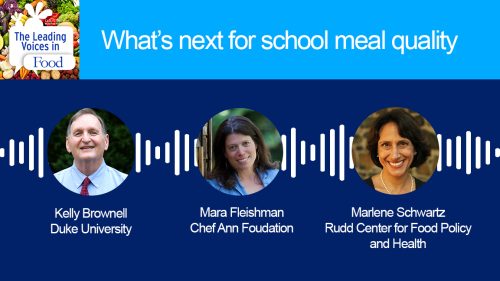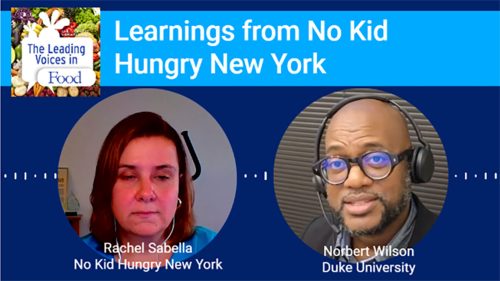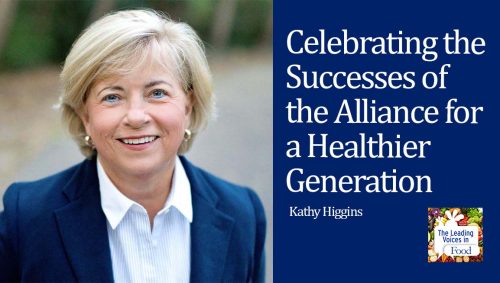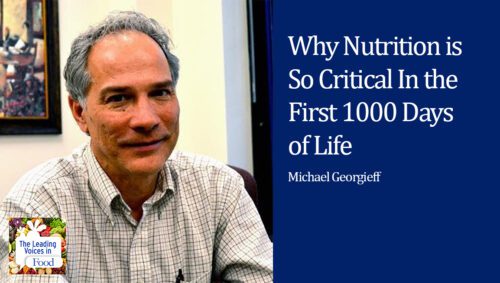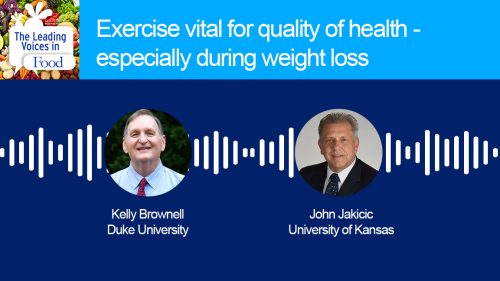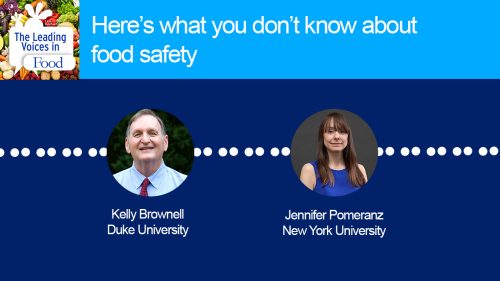The Leading Voices in Food
E111: Teaching Responsive Feeding to Parents Create Lifelong Healthy Habits in Children
There is very interesting work going on the topic of responsive feeding. Our guest today, Dr. Rafael Perez-Escamilla published commentary with several colleagues on feeding practices in the context of nurturing young children. And they began the paper with this statement: “Dietary guidelines provide advice on what to eat “to different subsets of the population, but often do not take into account the how to eat. It turns out that the how is pretty darn important.”
Subscribe: Apple Podcasts | TuneIN | YouTube Music | SoundCloud | PocketCasts | Radio Public
Tags: Child Development & Nutrition | Childhood Obesity | Children Food Preferences | Diet & Nutrition |

Rafael Perez-Escamilla is director of the Office of Public Health Practice and professor of epidemiology and public health at the Yale University School of Public Health.
Interview Summary
Rafael, you made compelling arguments about the reciprocity between children and their caregivers, helping parents recognize child’s hunger and satiety cues, and what is known as responsive feeding. What do you mean by reciprocity between child and caregiver?
This means that the infant or young child and their caregiver communicate with, and understand each other, to make joint decisions regarding the feeding process. And this involves understanding the hunger cues and also the satiety cues, and how these cues change as the child grows and develops. In other words, reciprocity means that the feeding process is a bi-directional process that reassures the child that his or her feeding needs are going to be met. And in many ways, the reciprocity that happens, if it’s implemented following responsive feeding principles, will allow the child to keep its innate ability to self-regulate their appetite, with very long-term implications for their health and wellbeing.
So, if a parent is engaging in responsive feeding and they’re responding to cues and signals their child is giving, what are some of these hunger and satiety cues that parents and caregivers can be attuned to?
Hunger and satiety cues evolve as the child develops, as I just mentioned before. As we all know infants zero to six months typically express hunger by opening their mouth, sucking their fist, crying, although just crying by itself doesn’t mean that it’s always hunger, but crying can be a symptom that the child is actually over the overfeeding. And older infants and toddlers will start pointing to food and eventually actually verbally communicate. So when infants don’t show interest to continue feeding they usually fall asleep or turn their heads away when food is offered to them, and get upset if the caregiver pressures them to eat. The older the child is, obviously the child has a stronger ability to simply push the food away. And these skills seem simple and common sense, but there are a number of them. And under the stress of parenthood, oftentimes they are not easy to interpret and to react accordingly. And essentially one of the key principles of responsive feeding is that children should not be pressured to eat when they are no longer hungry, and no longer ready to continue feeding.
So the assumption then is that if the parents respond to these cues that the children are given, you’re most likely to be feeding the child what she or he need, is that correct? So is it possible that some children will undereat or overeat?
We know that obviously any feeding approach for infants and young children has to be accompanied by the assessment of the growth and development of the child by the healthcare provider, usually pediatricians. So at the end of the day, it’s a combination of actually learning to correctly interpret hunger and satiety cues, but at the same time also making sure that the growth and development of the child is confirming that the child is self-regulating appropriately. The vast majority of infants and children can do it, but obviously there are exceptions and there are situations that even though the parents can be practicing responsive feeding, a child may not be growing or developing the way she or he should. So a key message here is very important to work both with parents and also with the training of healthcare providers, so that they can work together as a team with regards to assessing the appropriateness of the growth and development of the child.
Rafael, you’ve mentioned briefly when regular foods are being introduced to a child’s diet and as they grow older, you can have things like children who are picky eaters and don’t want to eat fruits and vegetables and things like that. How would this responsive feeding model apply in those areas?
That is a super important question because I think all of us who have been parents have gone through this. So essentially, responsive feeding needs to happen in a stimulating, stable environment that is conducive to the development of healthy dietary habits. And we know that, for example, children are born with the innate preference for sugary foods. And that’s why it’s a really terrible idea to give sugar sweetened beverages, and sweets, and desserts, and so on to infants because they have a very strong preference for those, and this is the time when their food preferences are being developed probably for the rest of their lives. On the other hand, we also know that the great majority of vegetables taste bitter to the child, to the infant, and through evolution we have interpreted bitter flavors as being poisons or harmful substances. So it takes a lot of patience, a lot of nurturing feeding to actually end up not convincing, but actually providing the opportunity for children to learn to like broccoli, and cauliflower, and Brussels sprouts, and all the veggies that it takes all of us a while to get used to them. And we know through very good research that for some of these veggies, it takes almost 20 tries before infant agrees to try them and accept them. And maybe even more tries until the child learns to love them, and develop a preference for them. So when we’re talking about picky eaters we’re really talking about that impairment of a child in some ways, or a dimension of the personality of the child that can be interpreted as difficult. And it is very important actually, that parents who have these types of kids with those personalities that they get the support from the healthcare providers, and others, and the dieticians to make sure that they have the patience, and they have the techniques available to them so that the kids can learn to like these healthy vegetables as well.
These feeding practices that you’re describing affect things like food preferences, and say body weight later in life?
Yes, it does. So we now know from half a dozen very high quality randomized control trials or experimental studies, conducted in the U.S., Australia, and New Zealand, that comprehensive responsive feeding interventions that focus on the very caring, nurturing, family-oriented child center experience of feeding combined with avoiding screens, distract the child when the child is eating, or avoiding screen use by the caregiver so that they are not texting and using cell phones when the child is feeding, and also combined with teaching parents how to use appropriate soothing techniques so that they don’t use sweets or other types of foods just to calm down a baby if the child is not hungry. Or that they don’t use the foods as punishment, or that they don’t use the food or toys as a way to entice the child to calm down, and eat more, and so on. That also relates very heavily with the understanding of the parents of the sleeping patterns of the babies, of the young infants. So these comprehensive interventions that include the feeding process itself, sleeping habits, soothing techniques, avoiding screens, and fostering more physical activity. Those interventions in these countries have shown not only healthier food preferences are developed by the child as a result based on the reciprocity, or reciprocal interaction, between the caregivers and the child, but also almost all of these studies have found improved weight outcomes during early childhood. So it is very encouraging, and it really tells us it is important that future dietary guidelines for children under two years of age don’t focus only on what they should eat and when food should be introduced, but also how the process of feeding should happen to foster the development of healthy dietary habits, including the ability to self-regulate for the rest of their lives.
What do you see as the public policy implications of this knowledge?
Yes, so because all the comprehensive responsive feeding interventions have been done in high-income countries with well-to-do families, I think the next frontier is to really understand how low-income families can actually benefit from this knowledge. And the reason is that by definition responsive feeding needs to happen in a stable nurturing family environment. And also, unfortunately we know that poverty affects family stability; it increases the risk of food and security; it increases the risk of health and security. So if you have all these instabilities, all these stressors, and the lack of access to healthy food, then how on earth are families going to be able to implement responsive feeding? So it is very important to really get into the realm of how social, economic, education food policies can actually be designed in a way that they can facilitate the implementation of responsive feeding practices by low-income families. So my team is actually doing research right now in Ghana. We’re also doing research in Mexico. And I really think that responsive feeding is a very powerful construct, it’s a very powerful approach that families get it. No matter how poor they are, they understand that it is very cool, that it is very important, and they all wish to be able to do this for their children. And we’ve had the same experience with our providers. And oftentimes a comment that one gets is this reaffirms what we have always believed, or if we had known all of these when we had young babies, we would have benefited so much from it. So we have recently released together with the Department of Health of Puerto Rico and the Pan American Health Organization the first set of comprehensive dietary guidelines for children under two years of age in Puerto Rico. And it includes a whole section on responsive feeding. So governments, international organizations, are really embracing this approach. So I am really hoping that research funds are made available to really understand the complexities of implementing these recommendations, especially in vulnerable settings or among vulnerable families.


